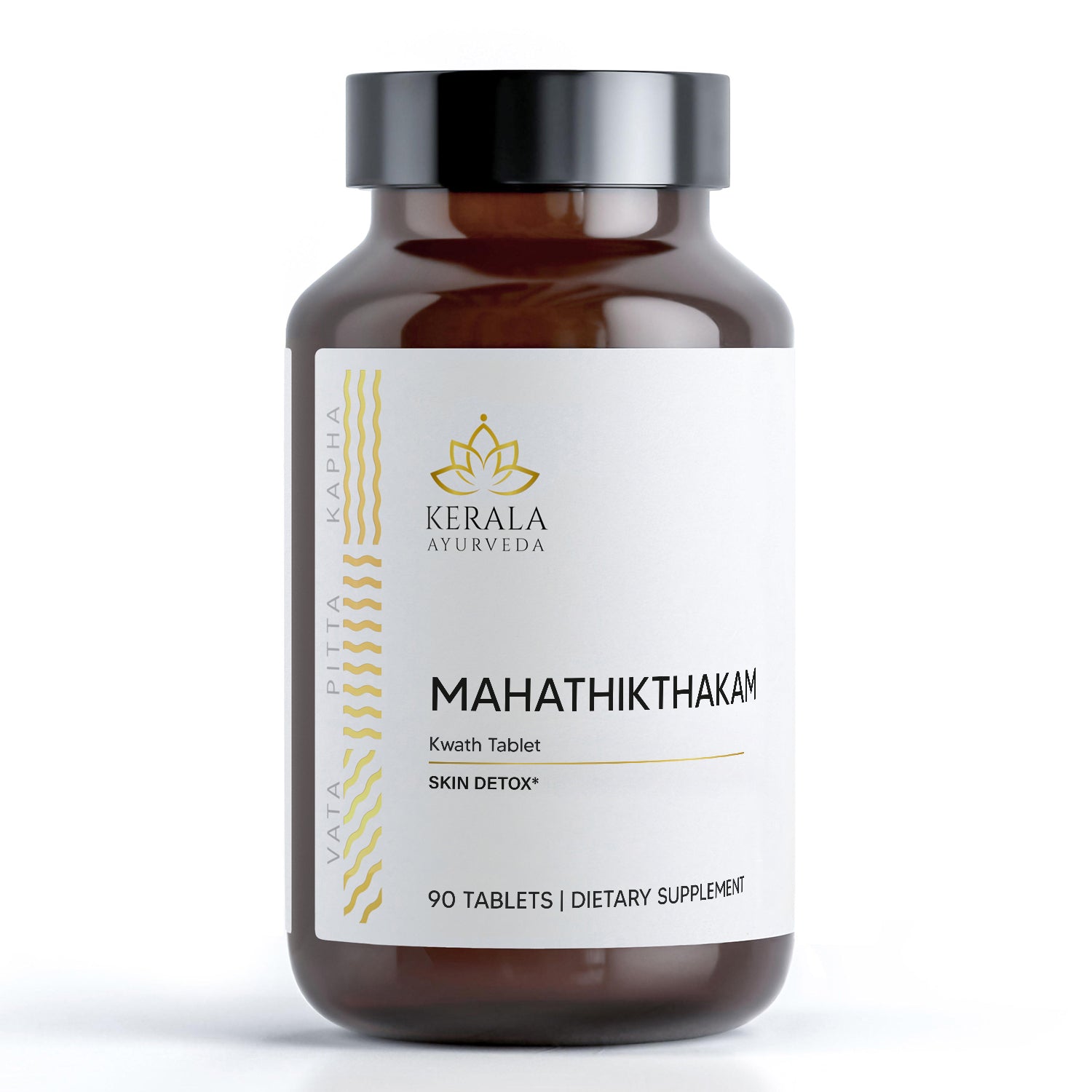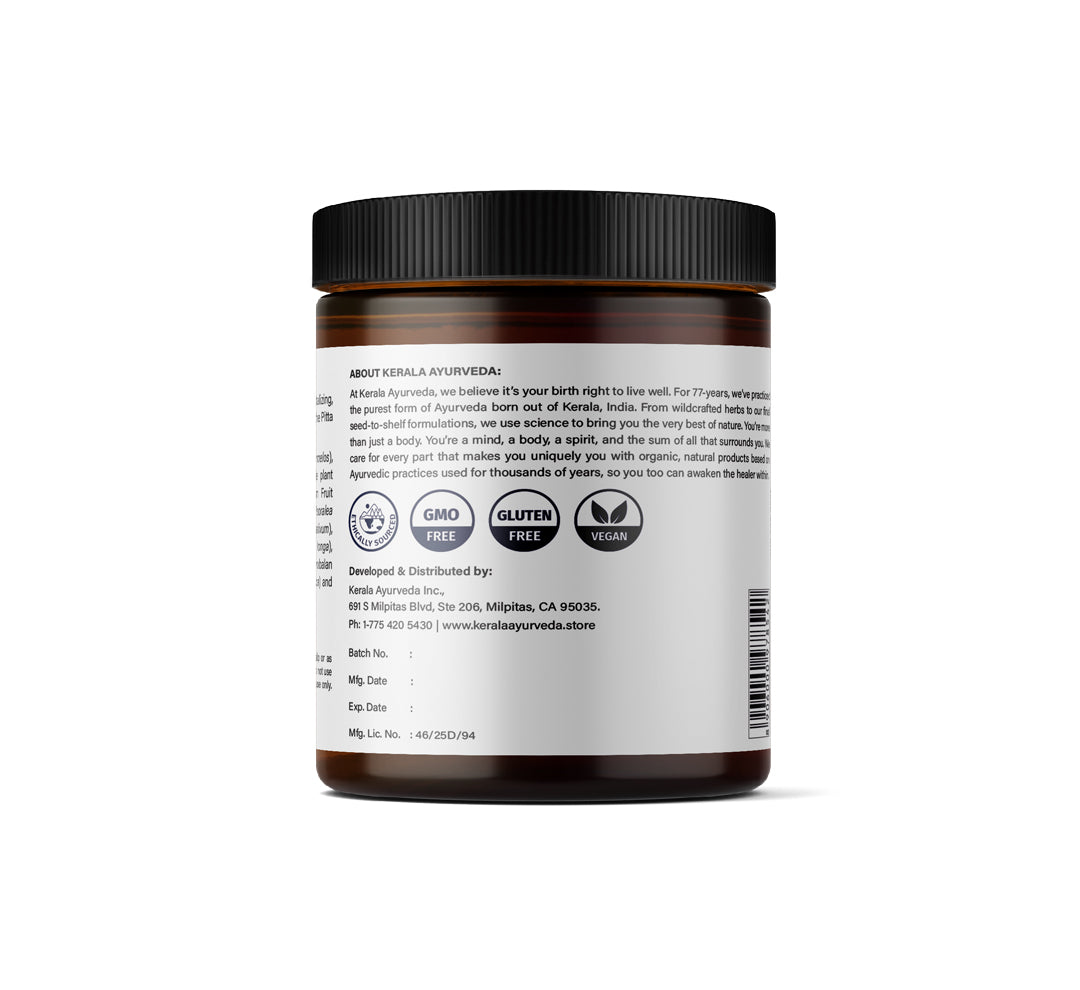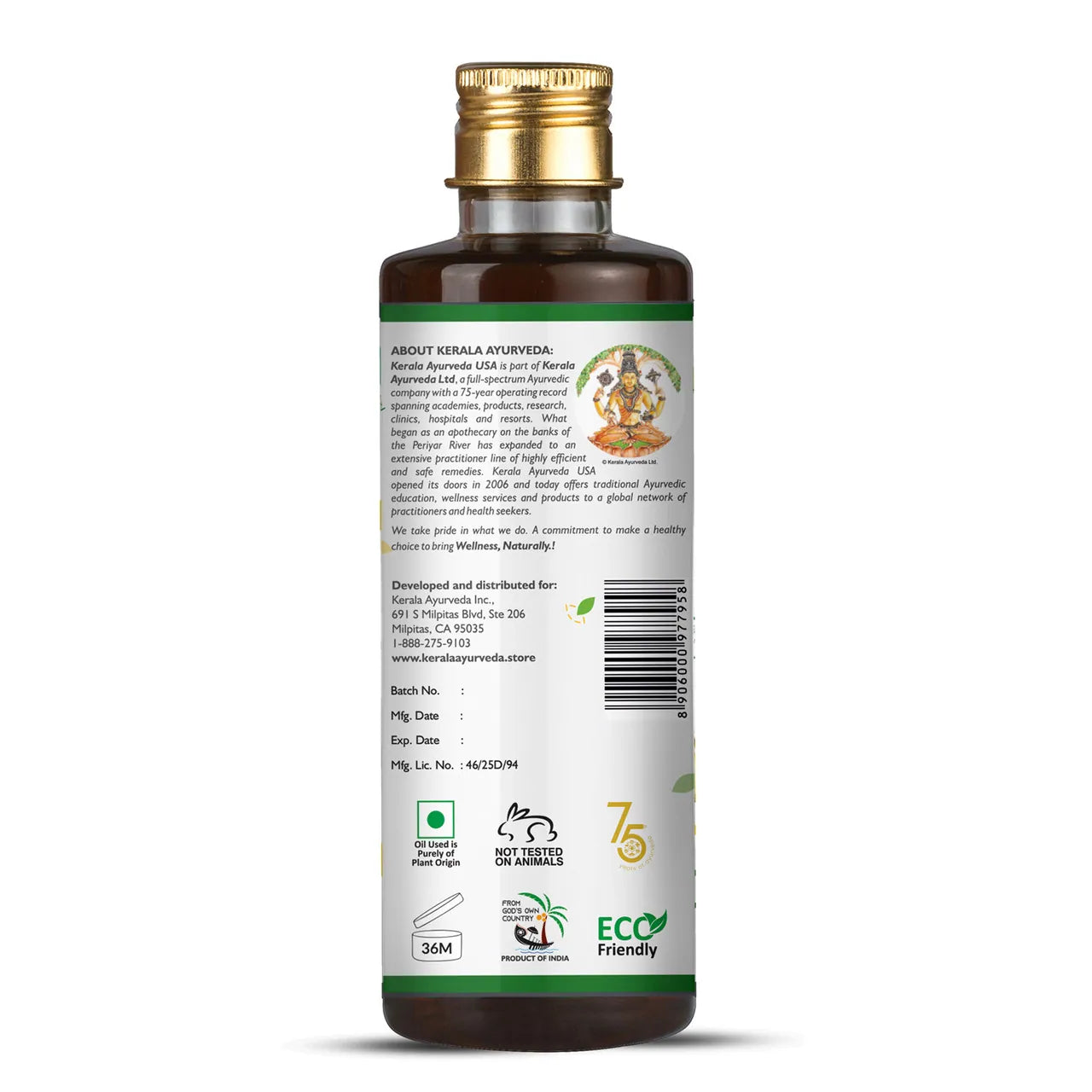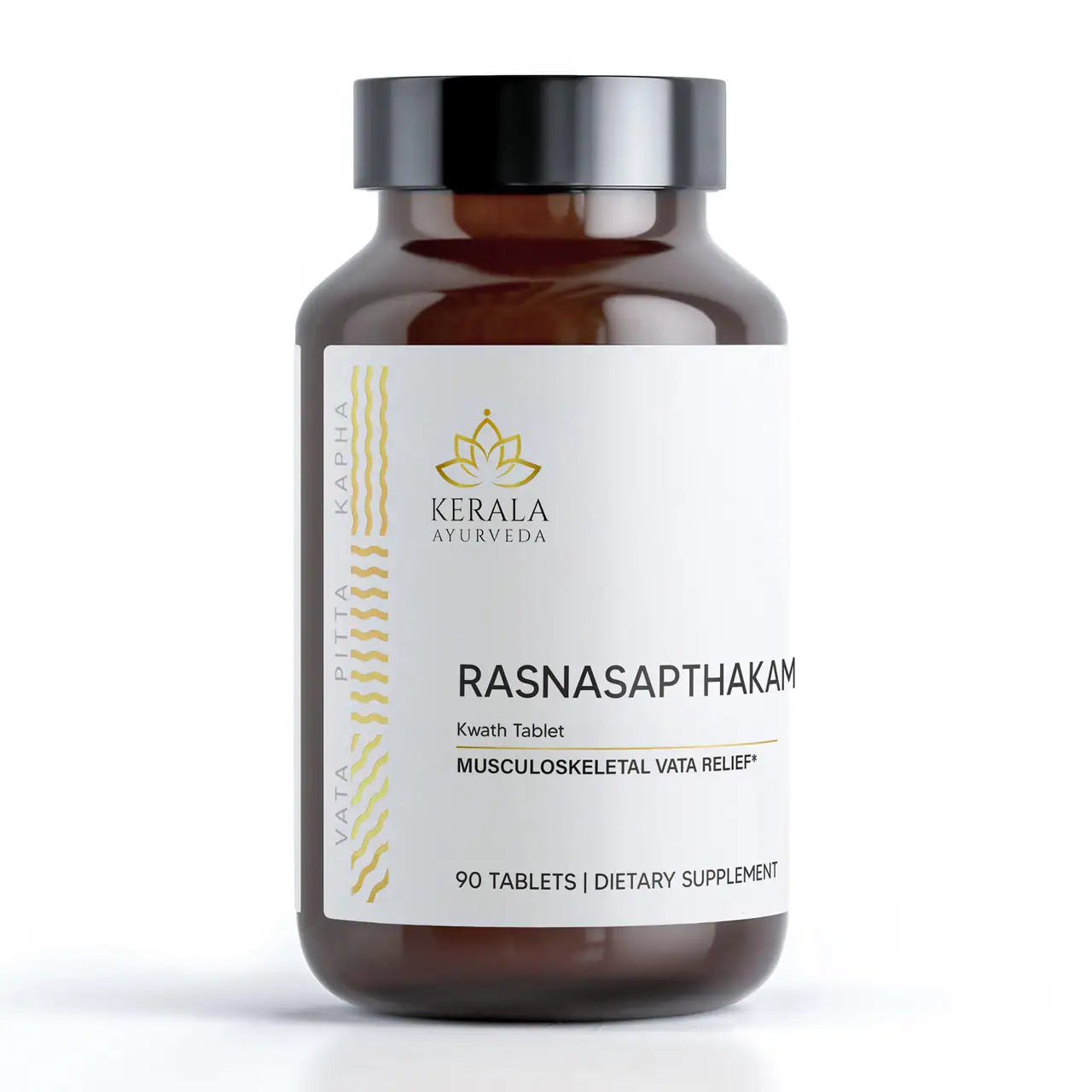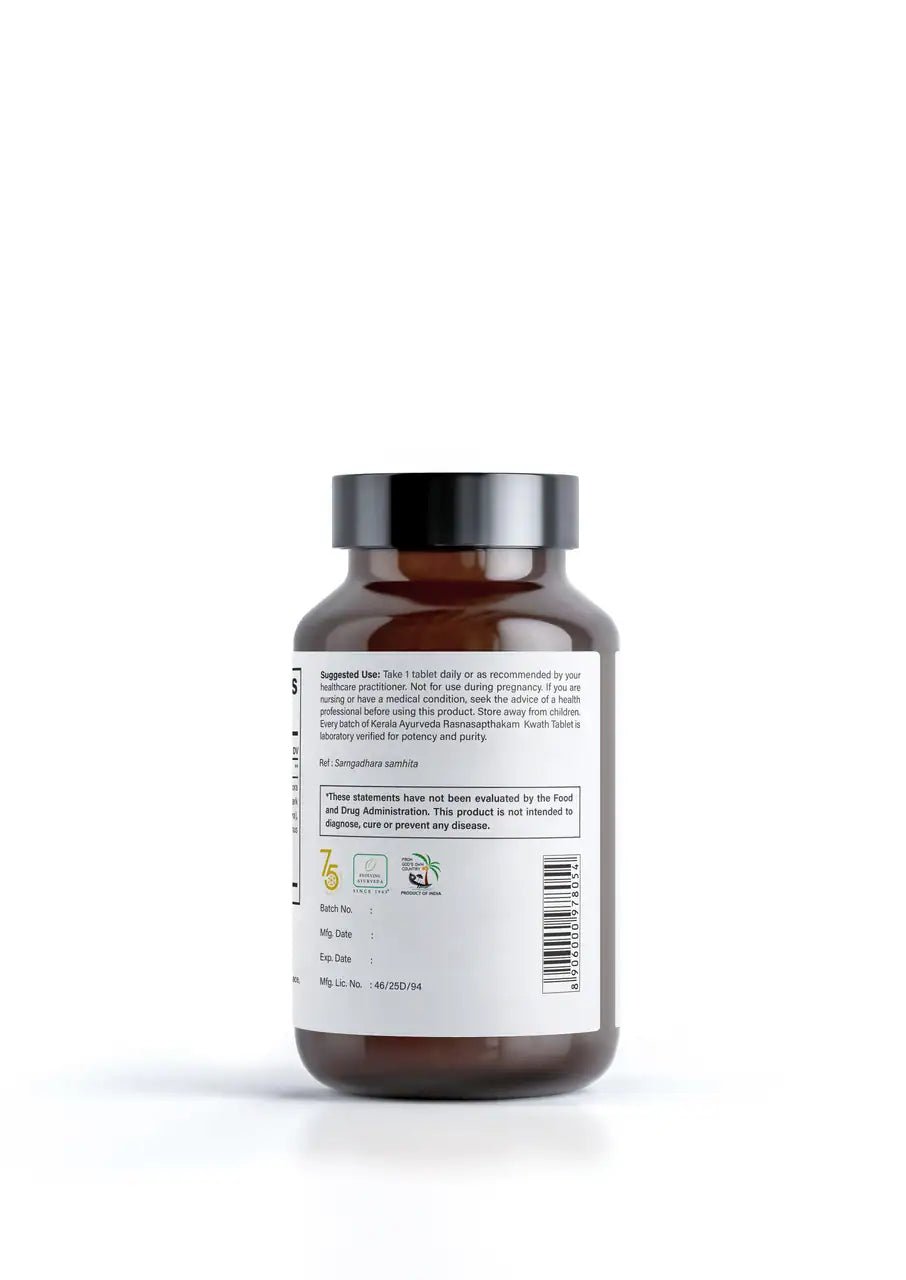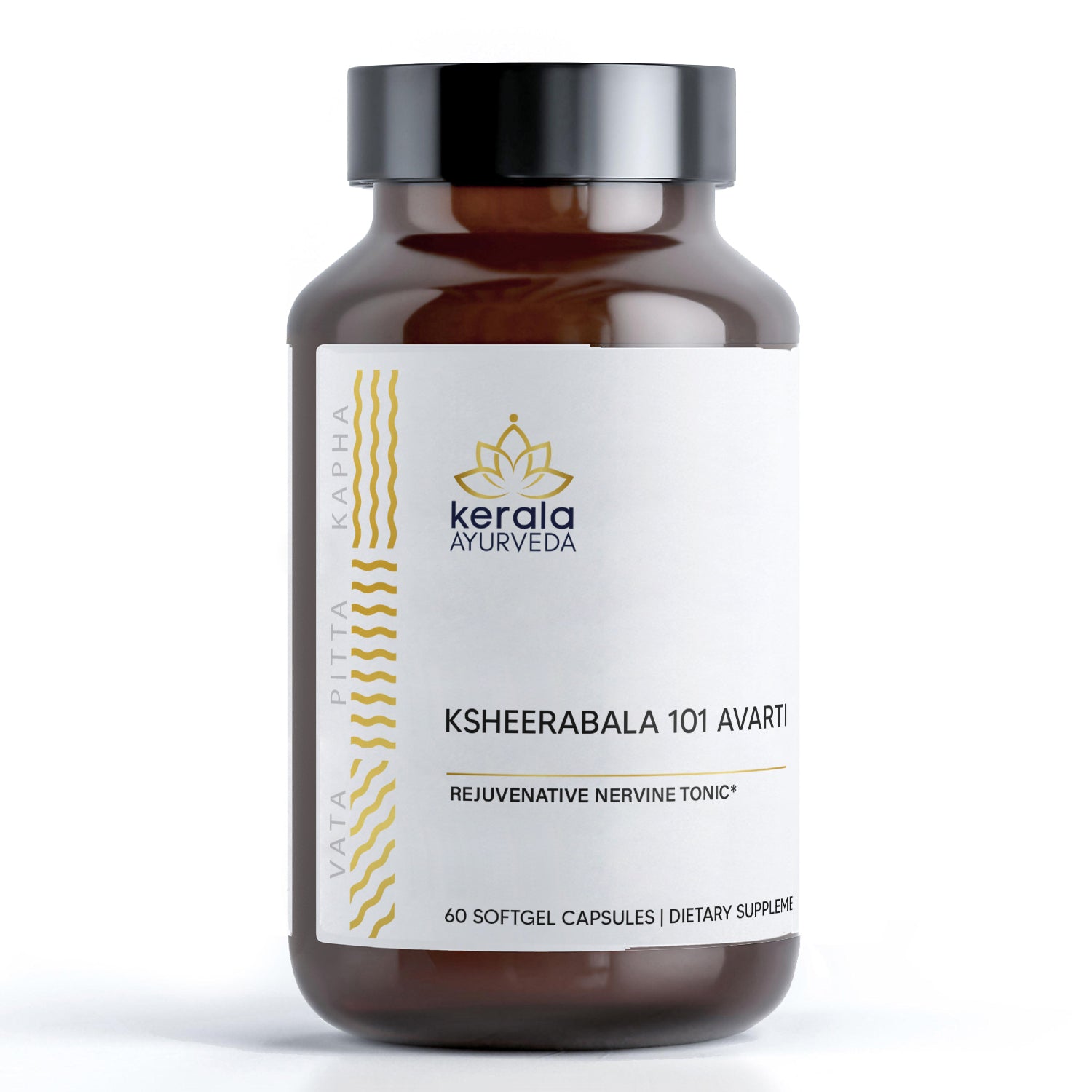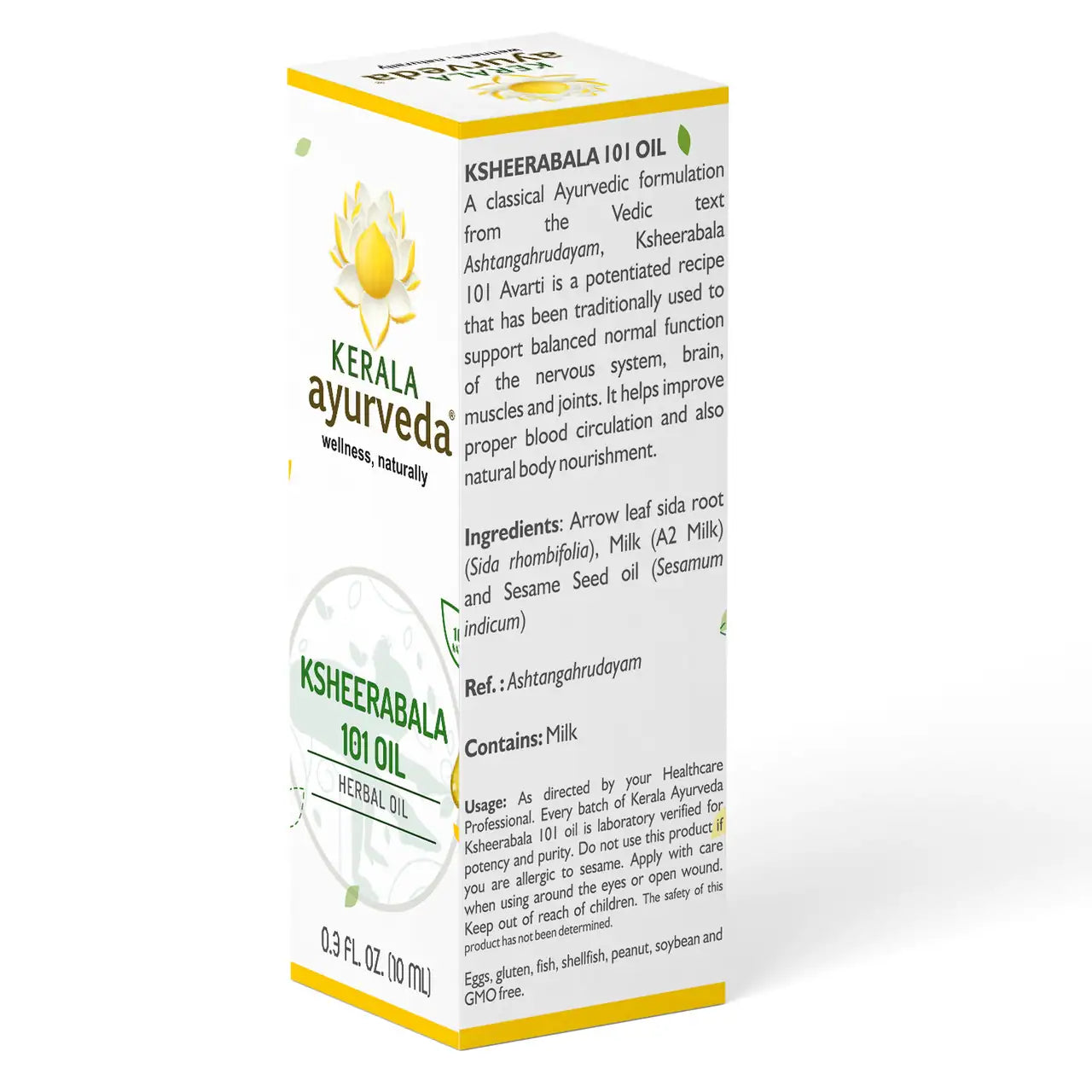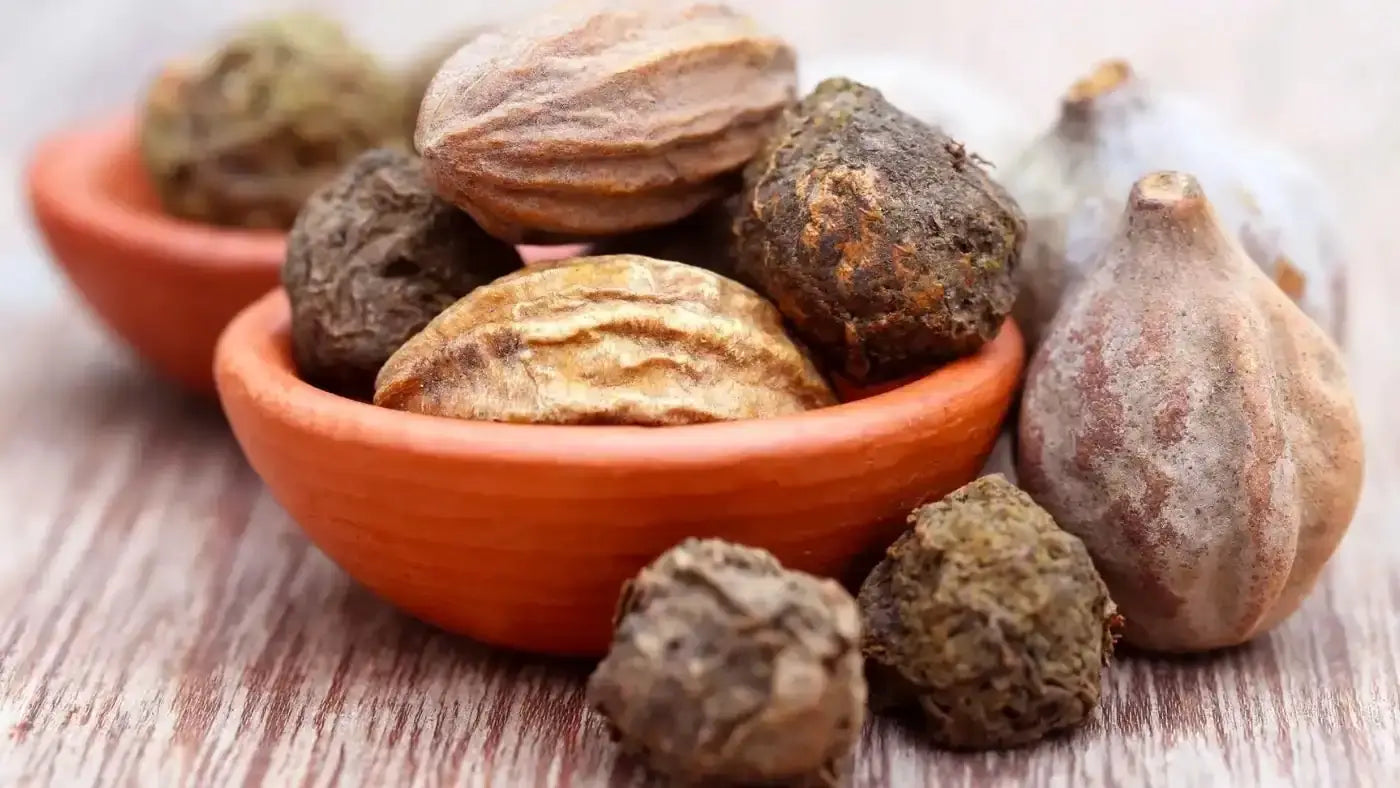Highlights
In Ayurveda, Triphala is a well-known herbal blend used in the ancient medicinal system to treat a range of ailments and diseases. Today, many people still turn to this popular blend to support their wellness journey in a natural way traditional to the classic Ayurvedic system of health.
In this guide, we’ll explore the healing uses of Triphala that have been cataloged over the years, and the benefits it provides in balancing different Doshic energies.
Traditional Benefits and Uses of Triphala
Triphala has been in use for thousands of years under the Ayurvedic systems of medicine. Primarily, it has been used for improving oral and digestive health, as well as skin healing and liver detoxification.
Triphala is full of antioxidants and is commonly used as a medicine or in culinary preparations like teas. The fruit compounds in Triphala are believed to hold strong antibacterial and anti-inflammatory effects, making this combination of ingredients perfect for alleviating bodily stress and aiding circulatory function and organ health.
Another traditional benefit and use of Triphala is its believed ability to aid fertility and immunity, balancing all three doshas, which is rare to find but particularly useful in those who suffer from multiple types of Dosha-induced ailments. Triphala is most widely known for its laxative and diuretic qualities, helping expunge the body of unhealthy toxins.
What Are the 3 Ingredients of Triphala?
Triphala is the Sanskrit name for an Ayurvedic blend of herbs meaning three fruits (tri, for three and phala, for fruits).
These three fruits are Amalaki, Bibhitaki, and Haritaki:
Amalaki, or the fruit of Phyllanthus emblica, is the Indian Gooseberry which has been a strong part of Ayurvedic healing and Buddhist symbolism for centuries. It is commonly used to support the digestive tract and circulatory system, detoxifying the body of harmful toxins known as Ama. The antioxidant properties make it a popular culinary addition as well.
Bibhitaki, also known as Terminalia bellirica, is a plant from southeastern Asia and India that is deeply ingrained in medicinal use throughout the two cultures. The fruits are large and used to treat multiple ailments as the blend is both an astringent herb that alleviates infection and a laxative to purge unhealthy accumulations.
Finally, Haritaki or Terminalia chebula is the third ingredient. Growing as a tall tree, this chebulic myrobalan is of the same genus or family of Bibhitaki, making it a complementary ingredient that blends well with the other two ingredients.
Together, these three ingredients create a powerful Tridoshic cure for imbalances of any of the Doshas that lead to various ailments.
Where Does Triphala Come From?
Each of the staple plants that Triphala is created from come from various regions in India. Many of these ingredients grow within or near the Kerala region of India where it was discovered and subsequently used as an ancient medicine.
As a blend of three herbal fruits, it is sometimes difficult to determine where the Triphala you purchase comes from. Clear packaging and third-party certifications are a great way to determine a quality product from a potentially poor-quality product.
Instead of guessing, the best thing you can do is purchase from a trustworthy, seed-to-shelf company like Kerala Ayurveda. All ingredients are harvested sustainably from non-GMO, organically-grown botanicals.
How Individual Ayurvedic Medicinals Come Together
Ancient Vedic texts inform many of our formulations at Kerala Ayurveda, as we are dedicated to faithfully reproducing these recipes and carrying on the tradition in one of the few places where this culture has been left intact. Often, it is not described how medicinals come together in the first place, but it can be pieced together as time goes on from the discovery of older or previously unknown texts.
In this case, Triphala likely came about as a powerful blend of herbs that balances each one of the Doshas. These synergistic fruits grew around the same region and were blended together to support all three Doshas and aid general well-being.
Working with the Body’s Connected Systems
As a unique polyherbal that treats Tridoshic imbalances, Triphala is considered one of the most important blends in Ayurveda for general well-being and health, especially when it comes to keeping your digestive system regulate.
This herbal blend works with the body’s connected systems to heal and balance individual organs, processing and bringing the body back into balance one system at a time. Depending on the individual, the use of Triphala may vary and your Vaidya may suggest a particular dosage that will work well for balancing your individual Ayurvedic constitution.
Triphala is a time-tested Ayurvedic herbal that has retained its popularity throughout the centuries and is now, thanks to the revival of ancient Vedic texts, available in its traditional form. This provides individuals with the purest and most authentic ingredients for whole-body health and well-being.
Is It Good to Take Triphala every day?
Yes, in many cases daily Triphala consumption can be a healthy support to detoxify the gut and digestive system and help eliminate unwanted toxins from the body. This blood-purifying, skin-healing, organ supportive herbal is also a well-known laxative that can help keep you regular if you are struggling with constipation.
If you begin to experience symptoms of too much Triphala, such as diarrhea and stomach upset, then reducing the frequency of use will likely resolve the issue. Always follow the guidance of a Vaidya when taking Triphala as the frequency and duration of use may differ based on your individual needs.
When is the Best Time to Take Triphala?
Triphala, depending on the form and dosage you are taking, is best consumed between meals when there is something already in the digestive tract, and soon followed with another meal. This prevents the polyherbal blend from being absorbed by an empty stomach and helps expunge toxins in the form of undigested food.
Typically, Triphala is taken in the evening or early in the morning when there is the most opportunity to eliminate the bowels. Triphala extract may be mixed with water or taken with food to improve the taste.
How Long Does It Take for Triphala To Start Working?
Depending on the dosage and reason you are using Triphala, noticeable effects may vary among individuals. Freshness and quality of the herbal extracts are key to maintaining the potency of the natural botanicals.
Most Triphala extracts are taken at night, or first thing in the morning with a cup of warm water. Depending on the time of day you take the blend, you could begin to notice effects during different parts of the day.
The rejuvenating properties of Triphala will help you feel more relaxed and alert, balancing the three Doshas and allowing you to go through the day feeling refreshed and reinvigorated.
Does Triphala Have Side Effects?
Like any medicine, Triphala does have side effects and should be taken under guidance from a qualified Vaidya who can inform you about specific Ayurvedic practices and its effects on different ailments and constitutions. Consuming too much Triphala can worsen the condition it is meant to treat. Because of its detoxification properties, too much can result in side effects such as diarrhea, nausea, and abdominal cramps.
To avoid these side effects, always stay within the recommended dosage and take Triphala on a full stomach to prevent potential cramping and nausea. Daily usage, if recommended, can be considered safe so long as you do not experience any side effects from the herbal blend and are taking the dosage suggested by a qualified Vaidya.
Who Should Avoid Triphala?
For some individuals, Triphala may exacerbate pre-existing conditions. For example, as a blend that lowers blood pressure, it is important for individuals who already have the low blood pressure to avoid taking this polyherbal.
Triphala has not been tested in western medicine with people who are nursing, pregnant, or underage, so it is recommended that these individuals avoid the use of Triphala as well. It may also interact with certain medications that are processed in the liver, so it is important to discuss any current medications with your healthcare professional before taking Triphala.
What Dosha Does Triphala Primarily Balance?
While many other Ayurvedic herbal blends balance a specific Dosha, Triphala is unique. Unlike other herbal blends, it is considered a blend that balances all three Doshas equally.
Triphala can balance aggravated Doshas that are in excess or depletion. These multi-balancing qualities are rare in traditional medicine, and many times, it is only through this type of polyherbal blend that these effects can be achieved.
Because of this ability to balance based on dosage and usage, however, it is important to use Triphala under the guidance of a Vaidya or Ayurvedic practitioner to help determine the best course of action.
Seed to Shelf: Bringing Traditional Ayurveda Back with Native Farms
Kerala Ayurveda is dedicated to bringing the art of traditional Ayurvedic practices from the Kerala, India region to homes across the globe. These ancient practices have held weight for thousands of years, becoming a staple philosophy for the people of India.
Still popular today, it is Kerala Ayurveda’s mission to make real traditions accessible to individuals seeking balance and clarity in their lives. Learn more about your Dosha with our Ayurvedic Academy, or talk to one of our experienced Vaidyas to figure out your current Ayurvedic imbalances.
As a true seed-to-shelf company, we connect you with a genuine marketplace of real ingredients harvested from organic, non-GMO plants with sustainable practices in mind. All of this comes from the Kerala, India region and supports local farmers of the region, keeping the plants where they belong and stewarding a natural, connected relationship with the land.











